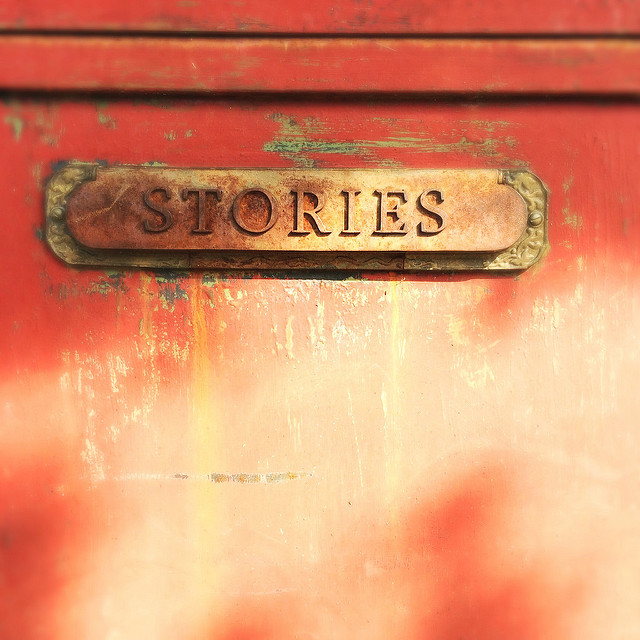I am back with my marketing and PR Top 5, which this time around is 3 (sorry, no refunds):

Another “Stories” Feature? But Wait, I Have Thoughts About Pandora Stories
Whenever a social media app launches a “Stories” app, I make a nasty face and, while checking them out, wonder why generally these features can’t pass the “Why?” test. Do you look at Facebook Stories? I don’t; I don’t see how they add to what people can simply post in their timelines. Instagram Stories I do see, mostly because the app notifications force them under my nose (well played, app notifications!), but my most frequent action is to figure out where each poster’s proper profile is, so I can comment and interact as I wish. Of course I blame Snapchat, which people apparently use, though as a marketer I have not seen any breakout example of a brand using the disappearing posts app effectively (perhaps you have; you are far more observant than I, and perhaps are spending far too much time looking for a good example that should not be difficult to find).
The latest offender is Pandora Stories. Why should we care about this? Just give me my music!
But wait: have a listen. The conceit here is that artists can add context and background to their music by creating an audio narrative to go with their tunes. As a music fan, I love finding the stories behind songs, albums and performances; hearing it from the artist themselves is something that definitely intrigues me. The launch (linked from this TechCrunch article) includes initial examples from the likes of John Legend, but also includes an example of a thematic playlist: “Love Songs That Aren’t Really Love Songs” (you need to be a Premium member to listen to these, but more power to Pandora for trying to stay in business).
That last example reminded me of something I tried with a client not long ago: using Spotify to create inspirational playlists to share with their audience of potential customers (in this case, the business was aimed at helping drug and alcohol addicts, and the playlists were meant to inspire people to help their state of mind and well-being). The idea didn’t go far, but that was mostly that it was far down the priority list, the result of a list of creative ideas we were trying out.
This brings me to a more important point: it’s a good idea to leave budget room in marketing and PR projects to experiment with different ideas. They don’t always have to succeed, but they can yield some unexpected good results- and today’s failed idea may work in the future, especially if a company like Pandora comes up with a tool that night make it work.
A Small Victory Against Fake News, Perhaps
We have been deluged for going on three years with stories about how people are swayed by “fake news” on Facebook and Twitter, with bad actors amplifying stories of, to be kind, questionable provenance and crystallizing hard-line beliefs that have swayed elections. It is hard to point to anything saying Facebook and Twitter have been effective in fighting these, or even owning up to the effect this has had, but I’m not here to figure out the solution. That said, it was interesting that another social platform- Pinterest- has taken a stand on the spread of anti-vaccination propaganda, especially in the wake of the recent measles outbreak attributed to staunch “anti-vaxxers.”
That’s one platform – and one issue. But if it’s effective, it could show a way for broader policing of social media. As it stands, I will plan on relying on my own personal filters, flawed though they might be and my common sense ( don’t have extra; go get your own) in sorting out news articles.
You Can’t Make This Up

“Makeup.” Get it? This caught my eye as my wife and several of her friends subscribe to similar monthly makeup and product boxes, giving them the chance to sample things they might not otherwise indulge in.
Thankfully, this story, of Julep’s new owners shutting down their subscription program, does not signal problems for this model. Rather, it’s a good-old story about what happens when a brand breaks a “contract” with its loyal customers. Clearly, Maven did not calculate the risk of PR fallout when they yanked the program and disappeared the rewards points their customers had collected. “Free gift” programs can come and go, but if people feel you are robbing them of value promised (think of how you feel when an airline abruptly changes its rewards points program and takes your hard-earned points from you), you have to communicate that in a way that does not earn bad publicity– and the ire of loyal customers.
Better ways to do this?
- A one-time free gift, with promises of how the new owner will make things bigger and better. There is a cost, but let’s assume a good company has calculated the cost of customer acquisition and planned accordingly.
- Find an equivalent program at the new parent company – or something roughly of value, even if it’s not the same type of rewards program – and enroll customers there.
- Phase out the program slowly, being flexible on how customers redeem points. Again, there’s nothing that says you can’t eliminate the program, but how you treat these customers says a lot about your business practices, and is a cheaper way to get loyalty than acquiring new customers.
